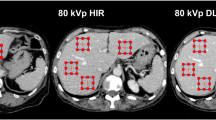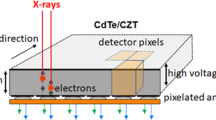Abstract
Quantitative positron emission tomography (PET) heart studies require the accurate localization of regions of interest (ROIs) on the myocardial wall (MW) and left ventricle (LV). The procedure is often inaccurate, especially when there is low tracer uptake. We implemented a data processing technique to improve the accuracy of the localization of ROIs on the MW and LV in fluorine-18 labelled deoxyglucose ([18F]FDG) PET heart studies. This technique combines transmission data, acquired before tracer administration and used for attenuation correction, and dynamic emission data (DY), acquired to obtain myocardial time-activity curves and used to calculate regional myocardial glucose utilization, to generate a new set of “transmission” images (TRDY) with enhanced contrast between MW and LV. These new transmission images identify the extravascular myocardial tissue and can be used for ROI placement. Validation of the method was performed in 25 patients, studied after an oral glucose load, by drawing irregular ROIs on three transaxial slices outlining the septum and anteriorapical and lateral wall on the last frame of the DY images (steady state) and then on the TRDY images. Two kinds of analysis were performed on a total of 225 myocardial segments: (1) mean counts per pixel in the DY images from ROIs independently drawn on DY and TRDY images were compared; (2) TRDY ROIs were copied onto DY images and repositioned in the event of mismatch between ROIs and myocardial tissue edge. Mean counts per pixel in the DY images from the original and the repositioned TRDY ROIs were compared. An excellent correlation was found in both cases (using TRDY and DY ROIs:y=0.908x+0.068,r=0.97; using TRDY ROIs alone:y=0.975x+0.006,r=0.99). This technique can be used for clinical applications in physiological and pathological conditions in which the myocardial [18F]FDG uptake is reduced or minimal, including diabetes and myocardial infarction.
Similar content being viewed by others
References
Ratib O, Phepls ME, Huang SC, Henze E, Selin CE, Schelbert HR. Positron tomography with deoxyglucose for estimating local myocardial glucose metabolism.J Nucl Med 1982; 23: 577–586.
Yamada K, Endo S, Fukuda H, Abe Y, Yoshioka S, Itoh M, Kubota K, Hatazawa J, Satoh T, Matsuzawa T, Ido T, Iwata R, Ishiwata K, Takahashi T. Experimental studies on myocardial glucose metabolism of rats with18F-2-fluoro-2-deoxy-d-glucose.Eur J Nucl Med 1985; 10: 341–345.
Phelps ME, Hoffman EJ, Selin C, Huang SC, Robinson G, MacDonald N, Schelbert HR, Kuhl DE. Investigation of [18F]2-fluoro-2-deoxyglucose for the measure of myocardial glucose metabolism.J Nucl Med 1978; 19: 1311–1319.
Berry JJ, Baker JA, Pieper KS, Hanson MW, Hoffman JM, Coleman RE. The effect of metabolic milieu on cardiac PET imaging using fluorine-18-deoxyglucose and nitrogen-13-ammonia ín normal volunteers.J Nucl Med 1991; 32: 1518–1525.
Choi Y, Brunken RC, Hawkins RA, Huang SC, Buxton DB, Hoh CK, Phelps ME, Schelbert HR. Factors affecting myocardial 2-[F-18]fluoro-2-deoxy-d-glucose uptake in positron emission tomography studies of normal humans.Eur J Nucl Med 1993; 20: 308–318.
Iida H, Rhodes CG, De Silva R, Yamamoto Y, Araujo LI, Maseri A, Jones T. Myocardial tissue fraction-correction for partial volume effects and measure of tissue viability.J Nucl Med 1991; 32: 2169–2175.
Hamacher K, Coenen HH, Stocklin G. Efficient stereospecific synthesis of no-carrier-added 2-[18F]fluoro-2-deoxy-d-glucose using amino-polyether supported nucleophilic substitution.J Nucl Med 1986; 27: 235–238.
Yu JN, Fahey FH, Harkness BA, Gage HD, Eades CG, Keyes JW Jr. Evaluation of emission-transmission registration in thoracic PET.J Nucl Med 1994; 35: 1777–1780.
Braunwald E, Rutherford JD. Reversible ischemic left ventricular dysfunction: evidence for ‘hibernating myocardium’.J Am Coll Cardiol 1986; 8: 1467–1470.
Brunken RC, Tillish J, Schwaiger M, et al. Regional perfusion, glucose metabolism, and wall motion in patients with chronic electrocardiographic Q wave infarctions: evidence of persistence of viable tissue in some infarct regions by positron emission tomography.Circulation 1986; 73: 951–963.
Tillish J, Brunken R, Marshall R, Schwaiger M, Mandelkern M, Phelps M, Schelbert H. Reversibility of wall motion abnormalities predicted by positron tomography.N Engl J Med 1986; 314: 884–888.
Marshall R, Tillish J, Phelps ME, Huang SC, Carson RC, Henze E, Schelbert HR. Identification and differentiation of resting myocardial ischemia and infarction in man with positron computed tomography,18F-labeled fluorodeoxyglucose and N-13 ammonia.Circulation 1981; 64: 766–778.
Tamaki N, Othani H, Yamashita K, Magat Y, Yonekura Y, Nohara R, Kambara H, Kawai C, Hirata K, Ban T, Konishi J. Metabolic activity in the areas of new fill-in after thallium-201 reinjection: comparison with positron emission tomography using fluorine-18-deoxyglucose.J Nucl Med 1991; 32: 673–678.
Lucignani G, Paolini G, Landoni C, Zuccari M, Paganelli G, Galli L, Di Credico G, Vanoli G, Rossetti C, Mariani MA, Gilardi MC, Colombo F, Grossi A, Fazio F. Presurgical identification of hibernating myocardium by combined use of technetium-99m hexakis-2-methoxy-isobutylisonitrile single photon emission tomography and fluorine-18-fluoro-2-deoxy-d-glucose positron emission tomography in patients with coronary artery disease.Eur J Nucl Med 1992; 19: 874–881.
Bettinardi V, Gilardi MC, Lucignani G, Landoni C, Rizzo G, Striano G, Fazio F. A procedure for patient repositioning and compensation for misalignment between transmission and emission data in PET heart studies.J Nucl Med 1993; 34: 137–142.
Wahl RL, Quint LE, Cieslak RD, Aisen AM, Koeppe R, Meyer CR. “Anatometabolic” tumor imaging: fusion of FDG PET with CT or MRI to localize foci of increased activity.J Nucl Med 1993; 34: 1190–1197.
Sinha S, Sinha U, Czernin J, Porenta G, Schelbet HR. Noninvasive assessment of myocardial perfusion and metabolism: feasibility of registering gated MRI and PET images.AJR 1995; 164: 301–307.
Pallotta S, Gilardi MC, Bettinardi V, Rizzo G, Landoni C, Striano G, Masi R, Fazio F. Application of a surface matching image registration technique to the correlation of cardiac studies in positron emission tomography (PET) by transmission images.Phys Med Biol 1995; 40: 1695–1708.
Moshfeghi M. Elastic matching of multimodality medical images.Graphic Models Image Process 1991; 53: 271–282.
Author information
Authors and Affiliations
Rights and permissions
About this article
Cite this article
Landoni, C., Bettinardi, V., Lucignani, G. et al. A procedure for wall detection in [18F]FDG positron emission tomography heart studies. Eur J Nucl Med 23, 18–24 (1996). https://doi.org/10.1007/BF01736985
Received:
Revised:
Issue Date:
DOI: https://doi.org/10.1007/BF01736985




